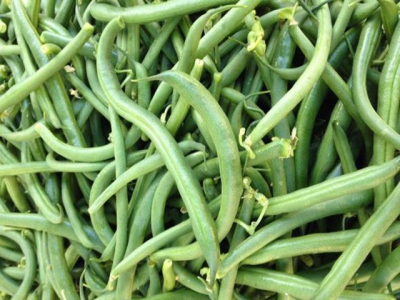Bean management as it affects harvesting

Harvesting is one of the big expenses in bean production and consequently needs to be done efficiently.
Breeders now select for uniform maturity for mechanical harvesting and less labour.
The time to start harvesting will depend on various issues. If there is a spike in the market price, it will usually pay you to harvest even when you consider it to be a bit on the early side. Well before that, once the bean crop is growing, your job is relatively simple: it’s a matter of keeping the leaves a healthy colour and not adding too much nitrogen.
Bean crops will very quickly show you when they are thirsty – the leaves will turn a darker, duller colour compared with the shiny leaves of areas where there is sufficient soil moisture. There will always be patches which show water stress before the rest, giving you a timely warning to irrigate as soon as possible. Once water stress symptoms start, things deteriorate fast.
Don’t get caught out: check the soil condition regularly to determine the moisture status.
To reduce the chance of disease, rather wait until the leaves are dry before opening the water if overhead irrigation is used.
Most diseases require a period of standing water on the leaves to develop. By starting irrigation before the dew has dried off, you will prolong the time free water remains on the leaf.
Indeed, any activities that take place in the land must be done when the leaves are dry. This includes weeding or picking, as any implements traversing the land can spread bacterial diseases. I have seen an entire row of beans infected from one person hoeing when the leaves were wet.
Beware of damage
The cost of packing material, transport, seed, fertiliser, irrigation and chemicals remains the same no matter the price, so a higher market price makes a huge difference to your profit. The problem with harvesting early is that workers can rough up the crop and cause damage in the process. Good supervision is required.
We usually use piece workers when harvesting to make this cost more economical. The larger the pods and the higher the concentration, the more one worker can harvest in a day. If you harvest when there are insufficient pods of the required size on each plant, you will have to reduce the number that each worker can pick. This extra cost has to be measured against the higher price to see whether it is viable.
The bean plant decides how many pods it thinks it can afford to take to seed maturity in accordance with the leaf area, fertility and climatic conditions. If you start to harvest early when flowering is still taking place and new pods developing, the plant will continue to produce new pods in its effort to produce seed for the next generation.
Higher yield
As a bean breeder, I sometimes decide to make a cross into a variety which is still flowering but fairly advanced. I remove all the pods and then make a cross. Later, when the plants alongside are all over-mature and drying off, this plant will still be green.
In such cases, you can get an overall higher yield provided the plants are not damaged during harvesting. Harvesting costs per kilogram will be higher, but if you want to provide product for a longer time, it can still be worth the effort. Not all varieties are suited to a prolonged harvest as, with picking and machine harvesting costs increasing, breeders now select for a uniform maturity as much as possible.
The old Espada is a good example of a variety more suited to prolonged harvesting. Pods become unmarketable when the seed development causes bulges in the pods and when the gel in the pod starts to dry up. Many varieties are now bred so as not to show the bumps in the pod and to have longer gel retention.
A starting point when harvesting is to use a target of 100kg of pods per labour day. However, this can vary according to pod size and the quantity of harvestable pods.
Có thể bạn quan tâm
Phần mềm

Phối trộn thức ăn chăn nuôi

Pha dung dịch thủy canh

Định mức cho tôm ăn

Phối trộn phân bón NPK

Xác định tỷ lệ tôm sống

Chuyển đổi đơn vị phân bón

Xác định công suất sục khí

Chuyển đổi đơn vị tôm

Tính diện tích nhà kính

Tính thể tích ao hồ



 Controlling weeds in green beans
Controlling weeds in green beans  What to do after planting your green beans
What to do after planting your green beans